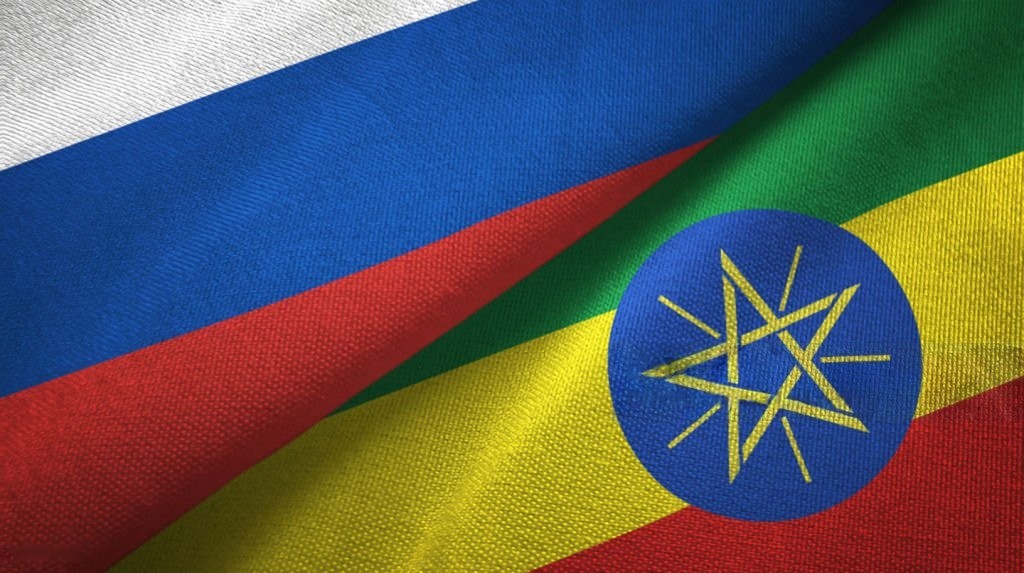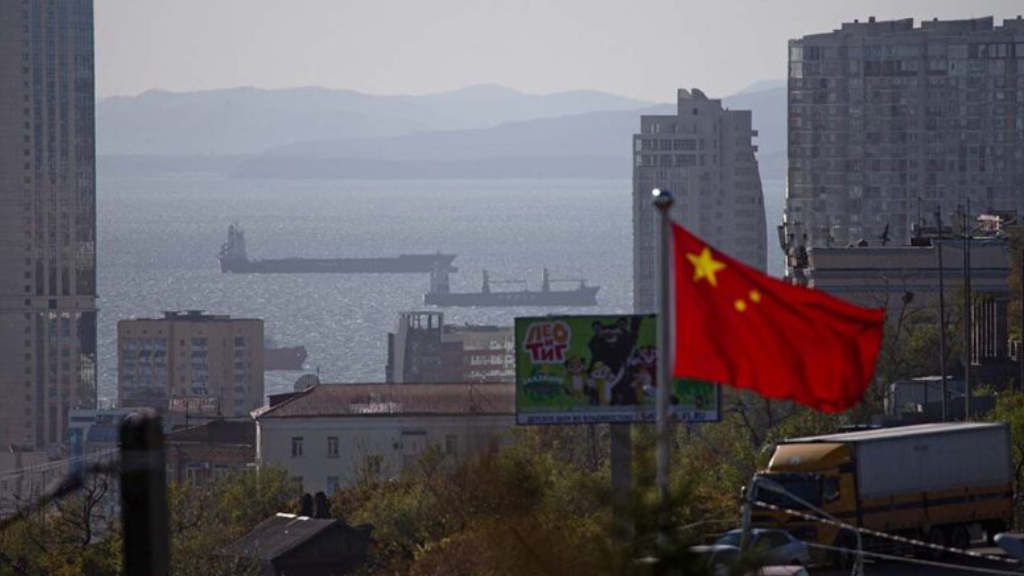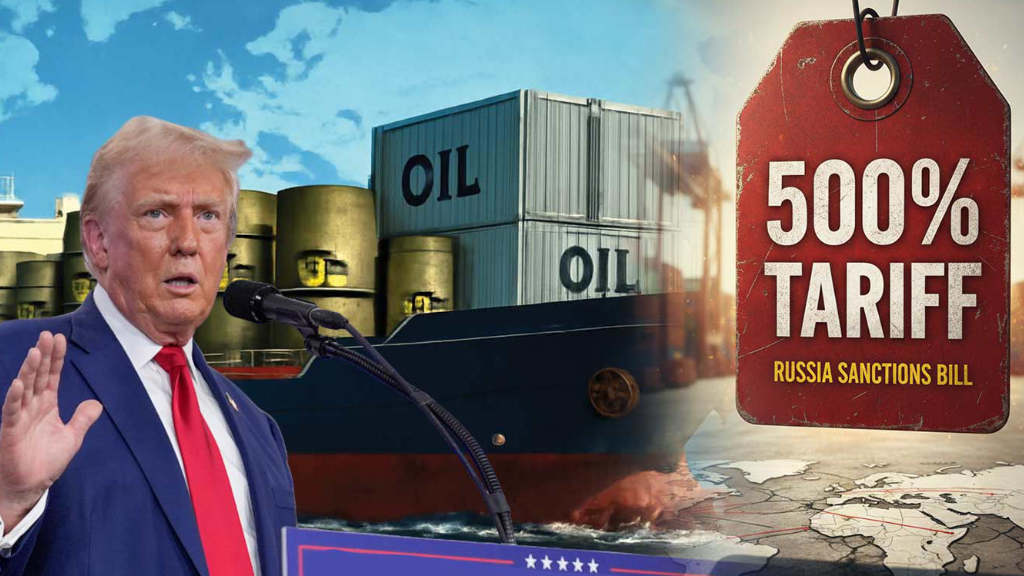The Russian President, Vladimir Putin, has met with Abiy Ahmed, the Prime Minister of Ethiopia, in Moscow.
At the beginning of the meeting, in the presence of the heads of state, Director General of Rosatom Alexei Likhachev and Foreign Minister of Ethiopia Gedion Timotheos exchanged the signed Action Plan between the State Atomic Energy Corporation Rosatom and the Ethiopian Electric Power Corporation on the development of a nuclear power plant project in Ethiopia.
On the Russian side, the talks were attended by Deputy Prime Minister Alexander Novak; Deputy Chief of Staff of the Presidential Executive Office Maxim Oreshkin; Deputy Chief of Staff of the Presidential Executive Office – Presidential Press Secretary Dmitry Peskov; Presidential Aide Yury Ushakov; Minister of Healthcare Mikhail Murashko; Minister of Finance Anton Siluanov; Central Bank Governor Elvira Nabiullina; Director of the Federal Service for Military Technical Cooperation Dmitry Shugayev; Deputy Foreign Minister Alexander Grushko; Deputy Minister of Economic Development Vladimir Ilyichev; and Director General of the State Atomic Energy Corporation Rosatom Alexei Likhachev.
Putin said that “Ethiopia is our long-standing reliable partner in Africa. Diplomatic relations between our countries were established in 1898. Our relations are making steady progress, and trade is growing. The intergovernmental commission is working effectively. We have good cooperation in humanitarian areas, above all, training specialists. Overall, our relations are gaining momentum across all areas, and we are very pleased that things are going that way.”
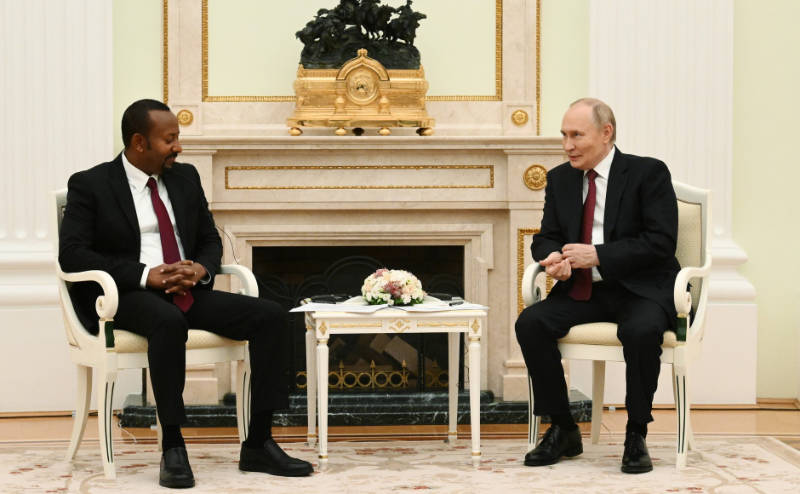
Ahmed replied “It has been almost a year since we met last time in Kazan for the BRICS summit. I sincerely hope that our next meeting will be in Addis Ababa. That would be very historic. We have a very strong bilateral relationship, where we share a common history, religion, also lots of policies. So, enhancing this historical background to make better the future is very important. From our end, we want to reinforce our mutual respect in all forms of cooperation. We also want to align strategically and share priorities. We also want to engage our partners in the development of diplomacy. I’m sure this visit will also strengthen this relationship.”
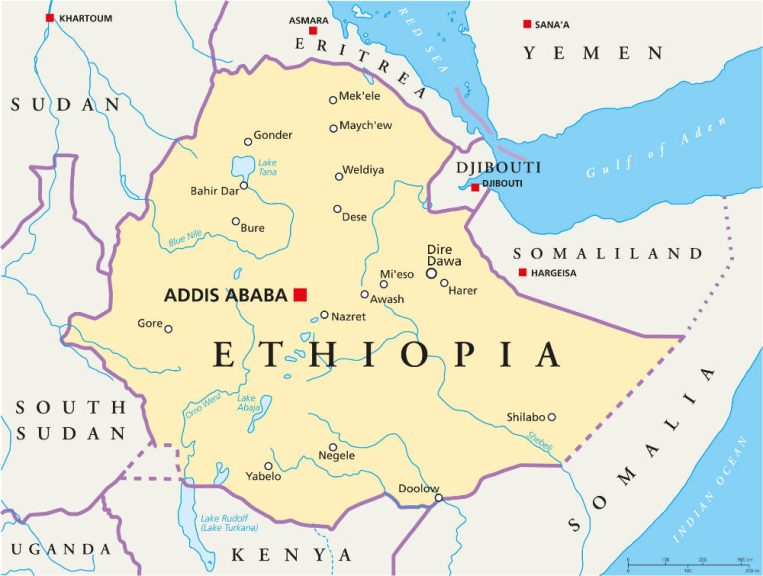
Ethiopia is a member of the African Continental Free Trade Area (AfCFTA), the Common Market for Eastern and Southern Africa (COMESA) and the Greater Arab Free Trade Area (GAFTA), which makes it one of the most influential countries in the East African region. In 2024, Ethiopia joined BRICS as a full member, which will improve its global trade and investment opportunities.
With a population of about 132 million, Ethiopia has a GDP (PPP) of US$657.8 billion, a GDP growth rate of 6.1%, and a GDP per capita (PPP) of US$4,045.
Bilateral trade between Russia and Ethiopia has fluctuated in recent years, due to both military problems with neighbouring Eritrea, sanctions imposed upon both countries by the United States, and a lack of an Ethiopian seaport. In 2024, bilateral trade amounted to about US$400 million.
Ethiopia exports mainly coffee and dried vegetable products to Russia, while Russia exports mainly wheat, and grains. In times of difficulty, Russia does provide Ethiopia with aid in the form of grain shipments.
Russia is also helping to revive Ethiopia’s Navy, with training at facilities near the capital, in order to prepare personnel for the potential leasing by Ethiopia of maritime facilities at Port Sudan, which coincides with Russian naval interest in utilising the same port. Negotiations remain on-going.
Rosatom, Russia’s nuclear power agency, is conducting a feasibility study to develop a NPP in Ethiopia. This will assess Ethiopia’s non-energy sector to identify how nuclear technology can address the country’s economic needs. This analysis will help compile a list of potential users of these technologies, laying the groundwork for a market for commercial products and services based on potential NPP capabilities.
In addition to the nuclear energy initiatives, Russian businesses have expressed interest in Ethiopia’s energy, pharmaceutical, and agricultural sectors, and are eying the country as a potential gateway to the larger COMESA region, which includes a further 20 African nations. COMESA has a population in excess of 640 million and a GDP over US$1 trillion. Accessing that and getting to Ethiopia’s real trade potential however requires investment and overcoming its logistics problems.
The overall trade trend shows relatively slow progress but is showing signs of improvement.
Further Reading

